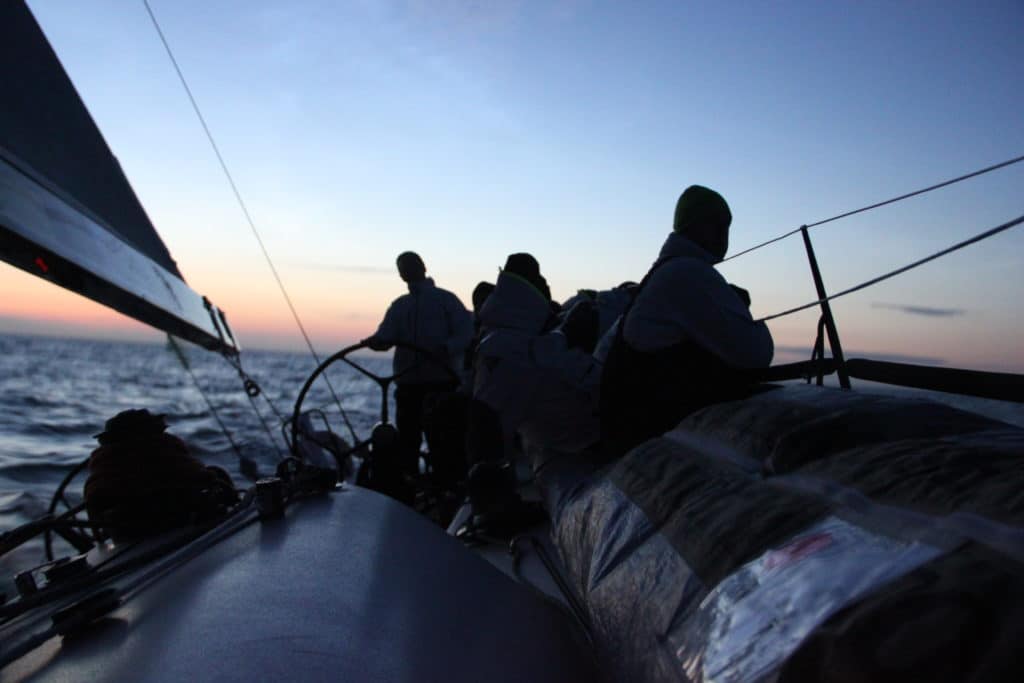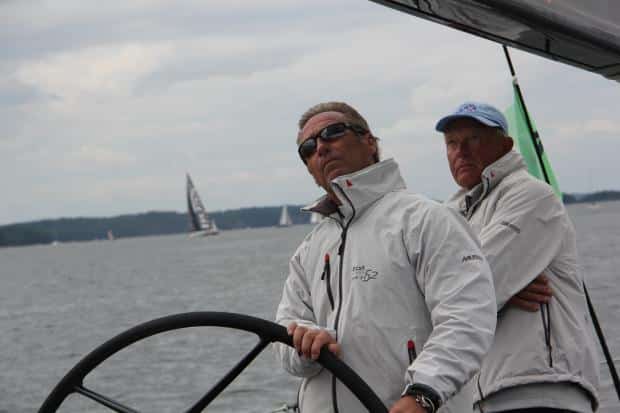
AF Offshore Race Photo
Over the course of 24 hours, I went from Horn Island off the Mississippi Coast fishing for redfish, drinking beer by a beach campfire, and exploring the desolate, but stunning Gulf Islands National Seashore to Stockholm, Sweden, where the sun doesn’t really set. I’m embedded on a TP52 in the ÅF Offshore Race, a 350-nautical mile distance race that starts in the center of a major European city and traverses the Swedish archipelago for 60 miles before hitting the open water of the Baltic Sea. Two hundred and fifty boats then head south for Gotland, the largest island in the Baltic, round it, and then finish at the Swedish resort of Sandhamn—where the bathing is purported to be excellent in 58-degree waters.
With DJs kicking Ibiza-style electronic dance music and the Royal Swedish Yacht Club’s logo plastered on everything—it was a bit of culture shock. The brochures touting the attractiveness of the locals are not misleading.
For three hours on Friday we tuned the TP52 and cruised around the Swedish Royal family’s private island. Skipper Thomas Blixt has won nine of these offshore races that were until recently known as the Round Gotland or Gotland Runt, and he is looking for his tenth. Then, he jokes, he can retire from this race.

My only saving grace on this Swedish boat is that the Swedes can switch to English without missing a beat (their children are now learning Chinese as well as English). But Swedish is the native language of the boat. I can barely pronounce the street my hotel is on, let alone the local expensive hooch, but I did manage to pick up a few key Swedish terms: cunningham, spinnaker, big puff—those I understand.
The regatta start is located directly across from the Parliament and the Royal residence. I do not exaggerate when I say this is a regatta that starts in the center of a major European city. Thousands came out to the Race Village to stroll the piers and take in the summer sun on Friday. On Saturday for the inshore race start tens of thousands walked the piers and jammed the concert stage and shoreline throughout the day. For the offshore start on Sunday, many more lined the city’s shores and islands, and watched from tour boats and private yachts. The regatta counted 180,000 visitors strolling the piers over three days. This is literally a perfect venue for watching boats, especially the grand-prix machines like Hugo Boss, Blixt Pro Sailing, and Esimit Europa on the starting line together.

The regatta itself traverses miles of this narrow forested and rocky archipelago filled with cruisers, tour boats, and cruise ships, before hitting the open water. I was expecting North Sea-like conditions, however, I have since learned that the Baltic Sea is really more like a giant brackish lake patrolled by the Russian fleet. Temperatures can easily drop into the 50s or less, even with a midnight sun and expected 20 knots of breeze overnight. Massive squalls and swells are unlikely. Rather, it’s the squirrely land-effect winds, rocks, and tour boats that present the biggest dangers.

Racing through the archipelago and around these stunning offshore islands, many turned into nature preserves by the fiercely environmentally-conscious Swedes, provides a racecourse that is as beautiful as it is quirky. No less than 40 tacks and 12 sail changes occurred in the archipelago alone–the first 60 miles. The finish is on the small island of Sandhamn where the Royal Swedish YC has secondary facilities. It has historically been the finish for this race since the early 1900s. It also becomes home to a monumental raft-up as the boats stream in to the finish for days. Spinnakers are always flowing in the distance for three to four days, making for an amazing backdrop for a post-regatta event where the sailors are treated like royalty.
I heard there is an Abba museum in Stockholm, but I’ll have to save that for next year … because I will be returning to this nearly perfect regatta.
Look for a feature on the ÅF Offshore Race in an upcoming issue of _Sailing World._









